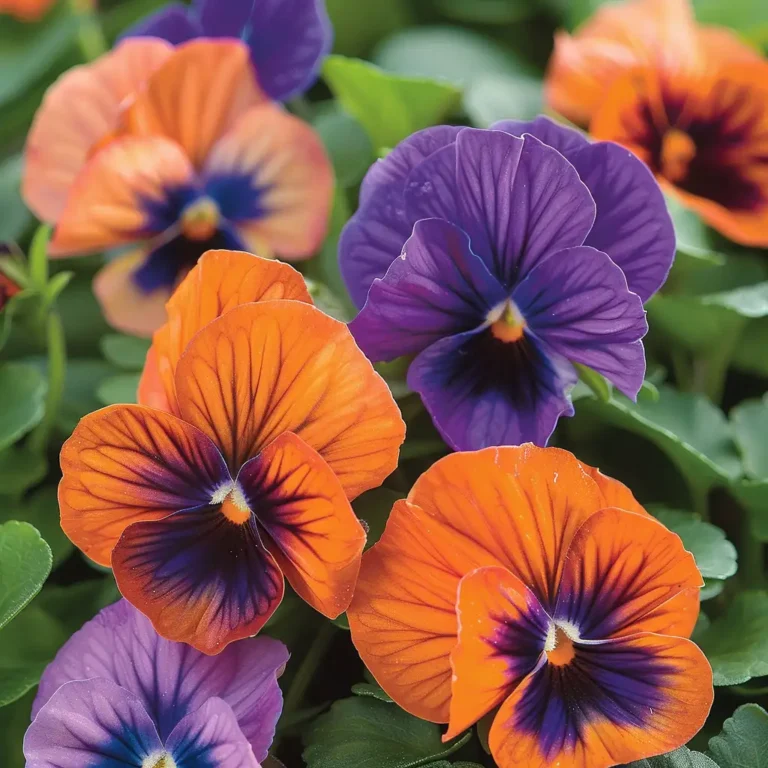Introduction
The Viola tricolor, commonly known as Johnny Jump Up, heartsease, or wild pansy, is a delightful addition to any garden. This cheerful flower is renowned for its vibrant colors and easy cultivation, making it a favorite among both amateur and experienced gardeners. Whether you’re interested in its ornamental beauty, culinary uses, or medicinal properties, Viola tricolor offers something for everyone.
Botanical Description
The Viola tricolor is a small, herbaceous plant that typically grows to a height of 6-12 inches. It produces charming, pansy-like flowers that come in a combination of purple, yellow, and white. The leaves are oval or heart-shaped with slightly serrated edges. This plant can be grown as an annual or a short-lived perennial, depending on the climate and growing conditions.
Varieties of Viola tricolor
- Johnny Jump Up: Known for its bright purple and yellow flowers.
- Heartsease: Features a mix of purple, yellow, and white blooms.
- Wild Pansy: A common name used interchangeably with Viola tricolor.
History and Origin
Viola tricolor is native to Europe and western Asia, where it grows wild in meadows and grasslands. It has been cultivated for centuries, valued not only for its beauty but also for its medicinal and culinary uses. Historically, it was used in folk medicine to treat various ailments and is still appreciated today for its natural benefits.
Cultivation and Care
Growing Viola tricolor is relatively easy, making it an ideal choice for gardeners of all skill levels. Here are some key tips for cultivating this vibrant plant:
- Soil: Prefers well-drained, fertile soil.
- Light: Thrives in full sun to partial shade.
- Water: Requires regular watering, especially during dry periods.
- Planting: Can be started from seeds or transplants. Sow seeds in early spring or fall.
Maintenance Tips
- Deadhead spent flowers to encourage continuous blooming.
- Protect from pests such as aphids and slugs.
- Mulch around the base to retain soil moisture and reduce weeds.
For more detailed information on growing Viola tricolor, check out the Comprehensive Overview of Viola tricolor.
Ornamental Uses
Viola tricolor is a popular choice for gardens and landscapes due to its bright, cheerful flowers and ease of care. Here are some ways to incorporate it into your garden:
- Border Planting: Ideal for edging along garden beds and pathways.
- Container Gardening: Perfect for pots and hanging baskets.
- Companion Planting: Pairs well with other annuals and perennials.
Culinary Uses
The edible flowers of Viola tricolor can add a splash of color and a mild, sweet flavor to various dishes. They are often used in salads, desserts, and as garnishes. Some popular culinary uses include:
- Salads: Fresh flowers add visual appeal and a subtle taste.
- Desserts: Use to decorate cakes, pastries, and ice cream.
- Beverages: Float flowers in drinks for an elegant touch.
Medicinal Uses
Viola tricolor has a long history of use in traditional medicine. It contains several active compounds that offer various health benefits. Some of the medicinal uses include:
- Anti-inflammatory: Helps reduce inflammation and soothe skin conditions.
- Antioxidant: Protects cells from oxidative damage.
- Respiratory Health: Used to treat coughs, colds, and bronchitis.
For more on the skincare benefits, visit the Benefits of Viola tricolor in Skincare.
Environmental Benefits
Viola tricolor plays a significant role in supporting local ecosystems. Its flowers attract pollinators such as bees and butterflies, contributing to the health of your garden. Additionally, it helps maintain biodiversity by providing habitat and food sources for various insects and animals.
Viola tricolor in Cosmetics
The extract of Viola tricolor is used in various skincare and beauty products due to its beneficial properties. It helps soothe irritated skin, reduce inflammation, and provide antioxidant protection. This makes it a valuable ingredient in natural and organic cosmetics.
FAQs
How to grow Viola tricolor from seeds?
- Sow seeds in early spring or fall.
- Lightly cover with soil and water gently.
- Keep the soil moist until germination.
What are the best conditions for Viola tricolor to thrive?
- Well-drained, fertile soil.
- Full sun to partial shade.
- Regular watering, especially during dry periods.
Are Viola tricolor flowers edible?
- Yes, they can be used in salads, desserts, and as garnishes.
What are the medicinal benefits of Viola tricolor?
- Anti-inflammatory, antioxidant, and respiratory health benefits.
Conclusion
In summary, Viola tricolor is a versatile and vibrant plant that offers numerous benefits, from its ornamental appeal to its culinary and medicinal uses. Whether you’re a gardener, a cook, or someone interested in natural remedies, Viola tricolor is a plant worth exploring and incorporating into your life.

